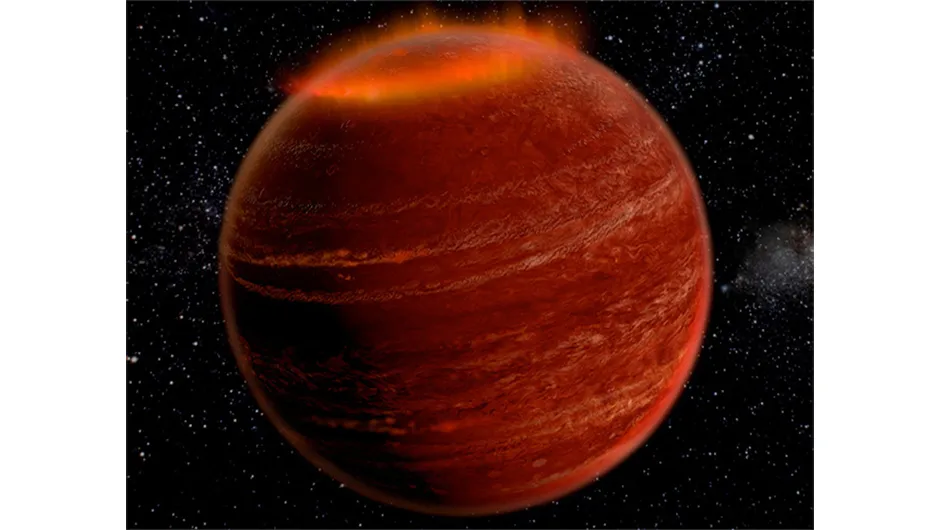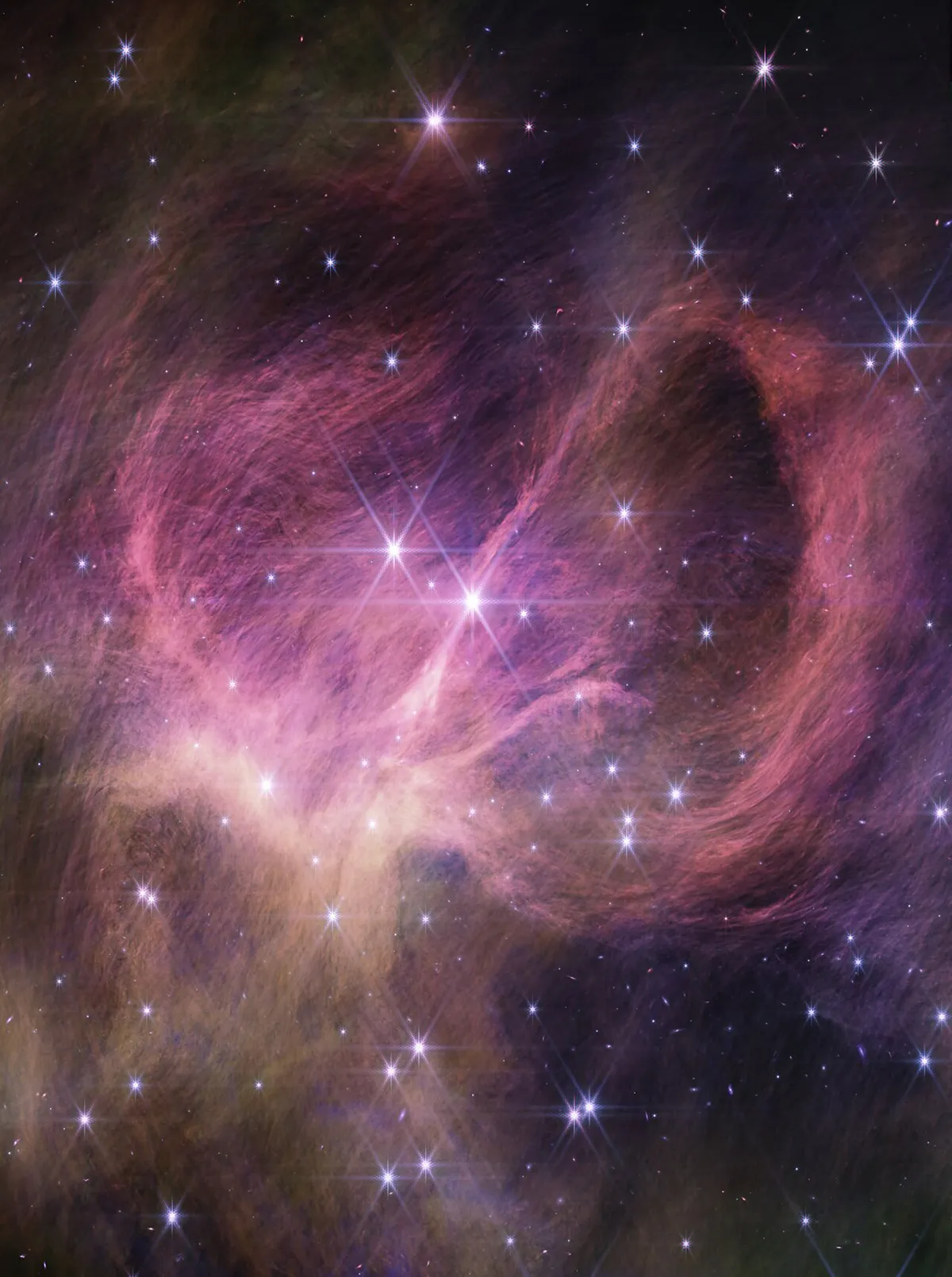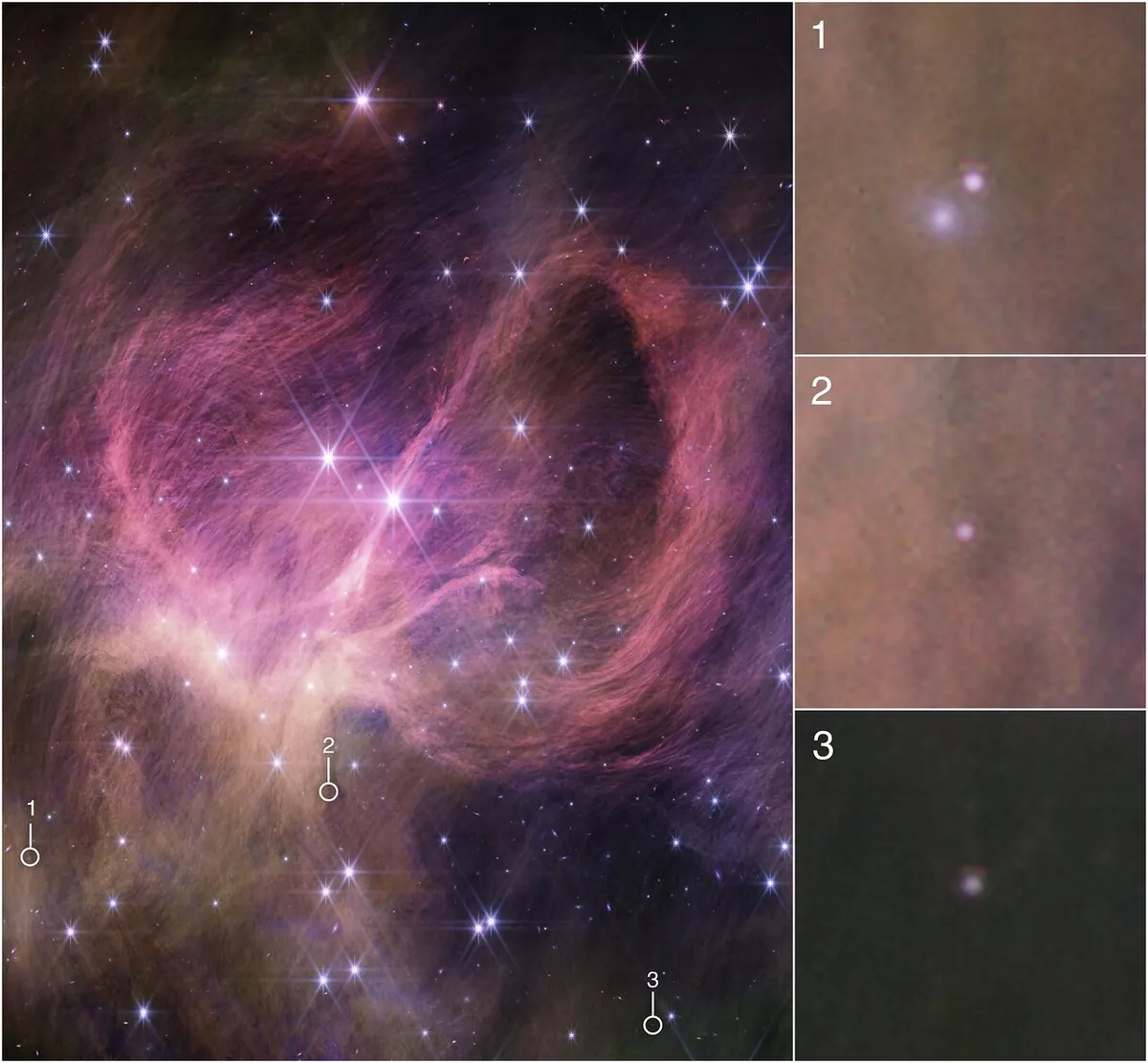How small can a star be? The James Webb Space Telescope is helping astronomers answer this very question with its discovery of the smallest brown dwarf yet observed.
Brown dwarfs straddle the line between stars and planets, and are often called 'failed stars'.
Like stars, brown dwarfs form by an object gravitationally collapsing in on itself but, unlike stars, they never gain enough mass to ignite nuclear fusion.
The very smallest brown dwarfs can end up being the same mass as the very largest planets.
See the latest James Webb Space Telescope images

The James Webb Space Telescope appears to have discovered an object weighing 'only' 3-4 times the mass of Jupiter: a new record holder for the smallest brown dwarf discovered, if confirmed.
A team of astronomers used Webb to search for the smallest brown dwarf: the smallest object that can form in a star-like manner.
Lead author Kevin Luhman of Pennsylvania State University and his colleague, Catarina Alves de Oliveira of the European Space Agency, used Webb to study star cluster IC 348, which is located 1,000 lightyears from Earth.
This cluster can be found in the Perseus star-forming region and is relatively young at just 5 million years old.
Because of just how young the stars in the cluster are, any brown dwarfs should still retain a vibrant, youthful glow in infrared light, which the Webb Telescope is designed to observe.

How the discovery was made
"One basic question you’ll find in every astronomy textbook is, what are the smallest stars? That’s what we’re trying to answer," says Luhman.
The team imaged the centre of IC 348 using the NIRCam (Near-Infrared Camera) instrument to identify brown dwarf candidates.
They then used the NIRSpec (Near-Infrared Spectrograph) instrument to follow up the most promising leads.
They settled on 3 promising targets of 3-8 Jupiter masses, with surface temperatures ranging 830-1500°C.
The smallest of these weighs just 3-4 Jupiters, pushing the limits of what astronomers know about how brown dwarfs form.
Such a small cloud of cosmic gas would have much weaker gravity, making it much more difficult to form a brown dwarf in the first place.
"It’s pretty easy for current models to make giant planets in a disc around a star," says Alves de Oliveira, who is principal investigator on the observing program.
"But in this cluster, it would be unlikely that this object formed in a disc, instead forming like a star, and three Jupiter masses is 300 times smaller than our Sun.
"So we have to ask, how does the star formation process operate at such very, very small masses?"

Studying the brown dwarf's atmosphere
A further discovery was made during Webb's observations of this object, and that's the spectral signature of an an unidentified hydrocarbon, a molecule containing both hydrogen and carbon atoms.
The same signature was detected by NASA’s Cassini mission in the atmospheres of Saturn and its moon Titan.
And it has also been detected in the gas between stars, known as the interstellar medium.
"This is the first time we’ve detected this molecule in the atmosphere of an object outside our Solar System," says Alves de Oliveira.
"Models for brown dwarf atmospheres don’t predict its existence. We’re looking at objects with younger ages and lower masses than we ever have before, and we’re seeing something new and unexpected."
Ejected planet?
Given the issues surrounding just how small this object is, and whether the cloud out of which it formed could have had strong enough gravity to cause its collapse, could it perhaps be a rogue planet?
Perhaps it's in fact a huge planet that has been ejected from its host star.
The team say this is unlikely because rogue planets with masses as great as this are uncommon compared to planets with smaller masses.
And, say the team, it’s unlikely that most of the low-mass stars in IC 348 would be able to produce such a massive planet.
As well as this, the star cluster is just 5 million years old, which probably isn't enough time for giant planets to form and be ejected from their systems.
The search for the smallest known brown dwarf continues.
In future, longer surveys may even be able to detect smaller objects potentially as small as 2 or even 1 Jupiter mass.
These observations were taken as part of Guaranteed Time Observation program #1229. The results were published in the Astronomical Journal.
